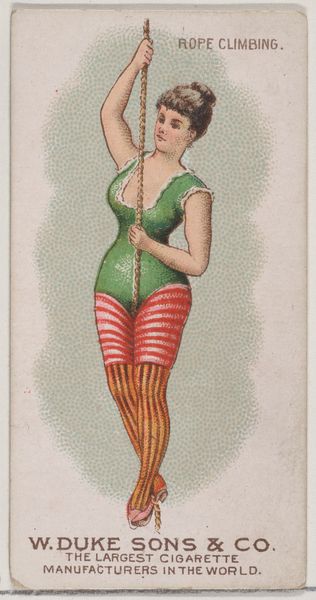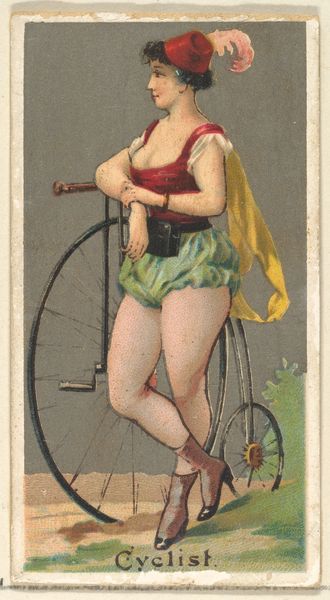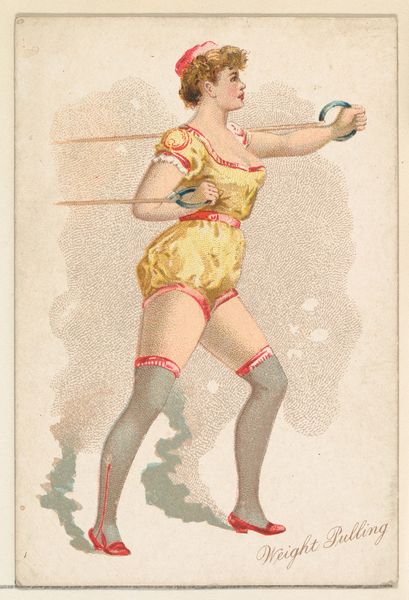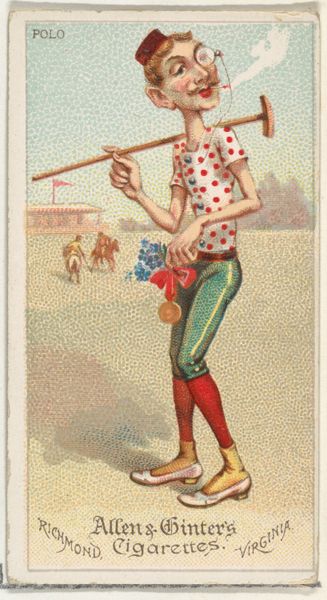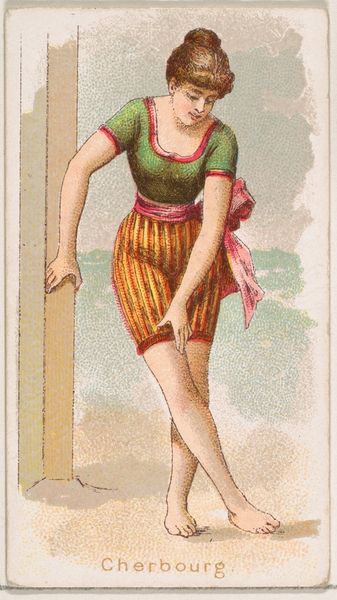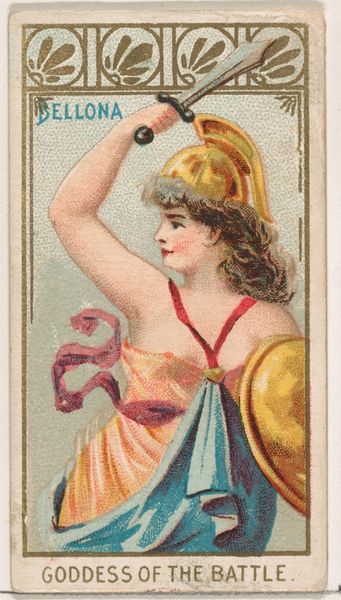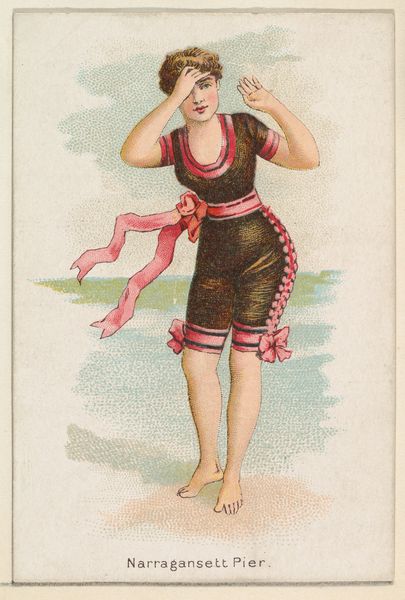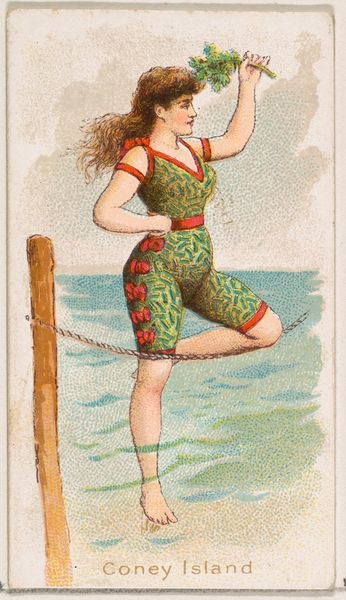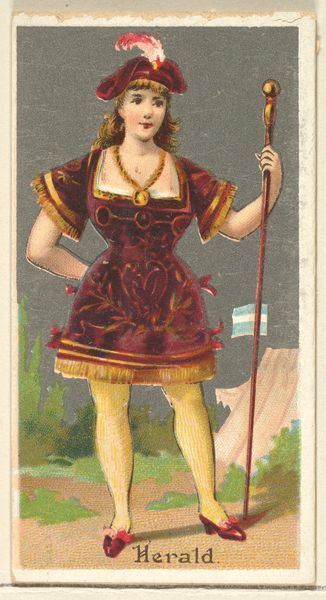
Clown, from the Occupations for Women series (N166) for Old Judge and Dogs Head Cigarettes 1887
0:00
0:00
drawing, coloured-pencil, print
#
portrait
#
drawing
#
coloured-pencil
# print
#
impressionism
#
caricature
#
caricature
#
figuration
#
coloured pencil
#
genre-painting
Dimensions: sheet: 2 11/16 x 1 1/2 in. (6.9 x 3.8 cm)
Copyright: Public Domain
Curator: Immediately, I'm struck by the rather melancholic feel of this "Clown." The muted tones and the clown's contemplative gaze evoke something far beyond simple amusement. Editor: That’s an interesting interpretation. To me, the immediate read is the graphic quality – the strong outline, the flat colors, the distinct pattern. I find the overt display of labor far more captivating here, this originates as a printed lithograph card for Old Judge and Dogs Head Cigarettes, dating back to 1887. It's a colored pencil drawing translated through mass production, cheap promotional material. Curator: Precisely. But consider the context! Cigarette cards often depicted aspirational figures or popular entertainments. Here, the clown, a figure of mirth, is subtly presented in a 'feminine' form – defying, perhaps, societal expectations, as these "Occupations for Women" often did. Think of the loaded symbolism of the hula hoop, the implied circles of life and constraint. Editor: Loaded symbolism feels generous. I wonder more about the actual production of such a card. This isn't a painting made in solitude, but an industrial process, countless copies churned out, the design itself commodified and consumed. Even the colours become products. Curator: Yes, but it enters the popular imagination, regardless. These images lodge in cultural memory. What did the figure of a 'working woman', even one costumed, signify to the everyday consumer? Was she challenging expectations, reinforcing them, or just...selling cigarettes? This clown, her posture...it’s the sadness beneath the surface. Editor: And I suppose I look at it the other way around – how does mass production colour our perception of archetypes and ‘symbolism?' Are the messages delivered really a series of byproducts when we track artistic intention and output on this kind of scale? Curator: It gives us a reflection of societal pressures and expectations. Editor: Indeed. Though not where I expected. It also gives us a means to interrogate value. Thanks for bringing the work into sharper focus, even for someone set in their perspective, like me. Curator: As you have illuminated the way that industry shapes and influences culture for us.
Comments
No comments
Be the first to comment and join the conversation on the ultimate creative platform.

